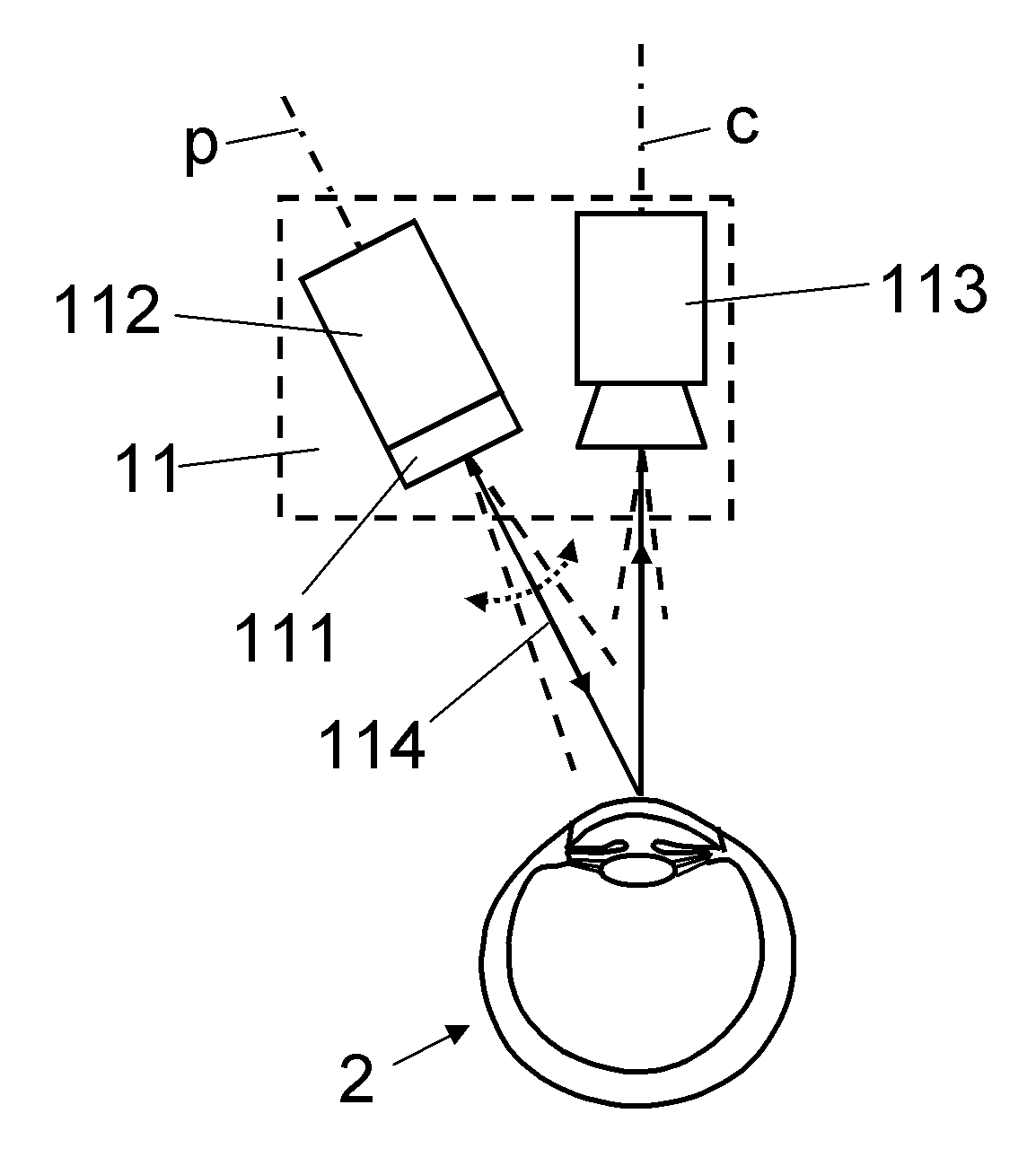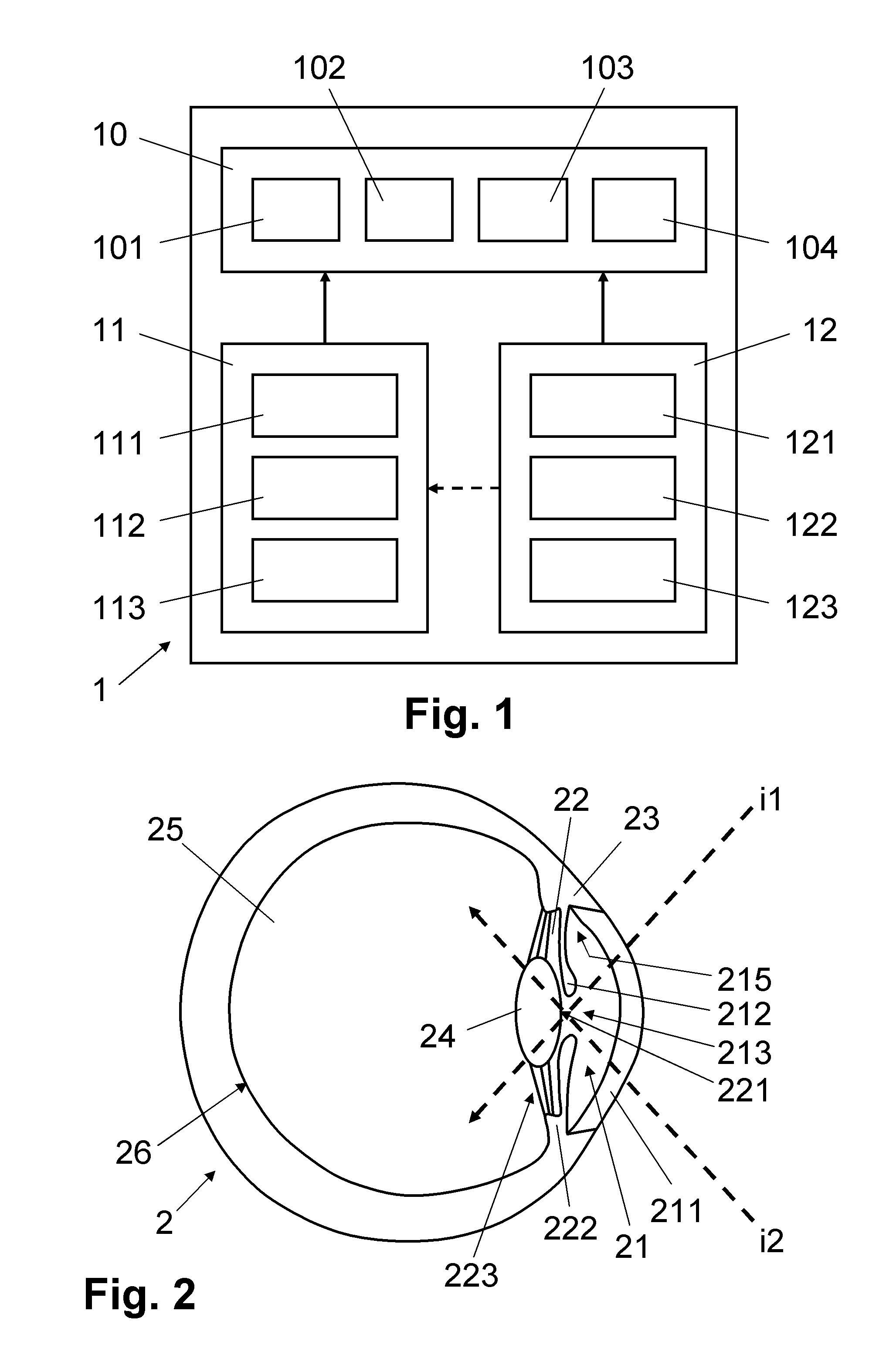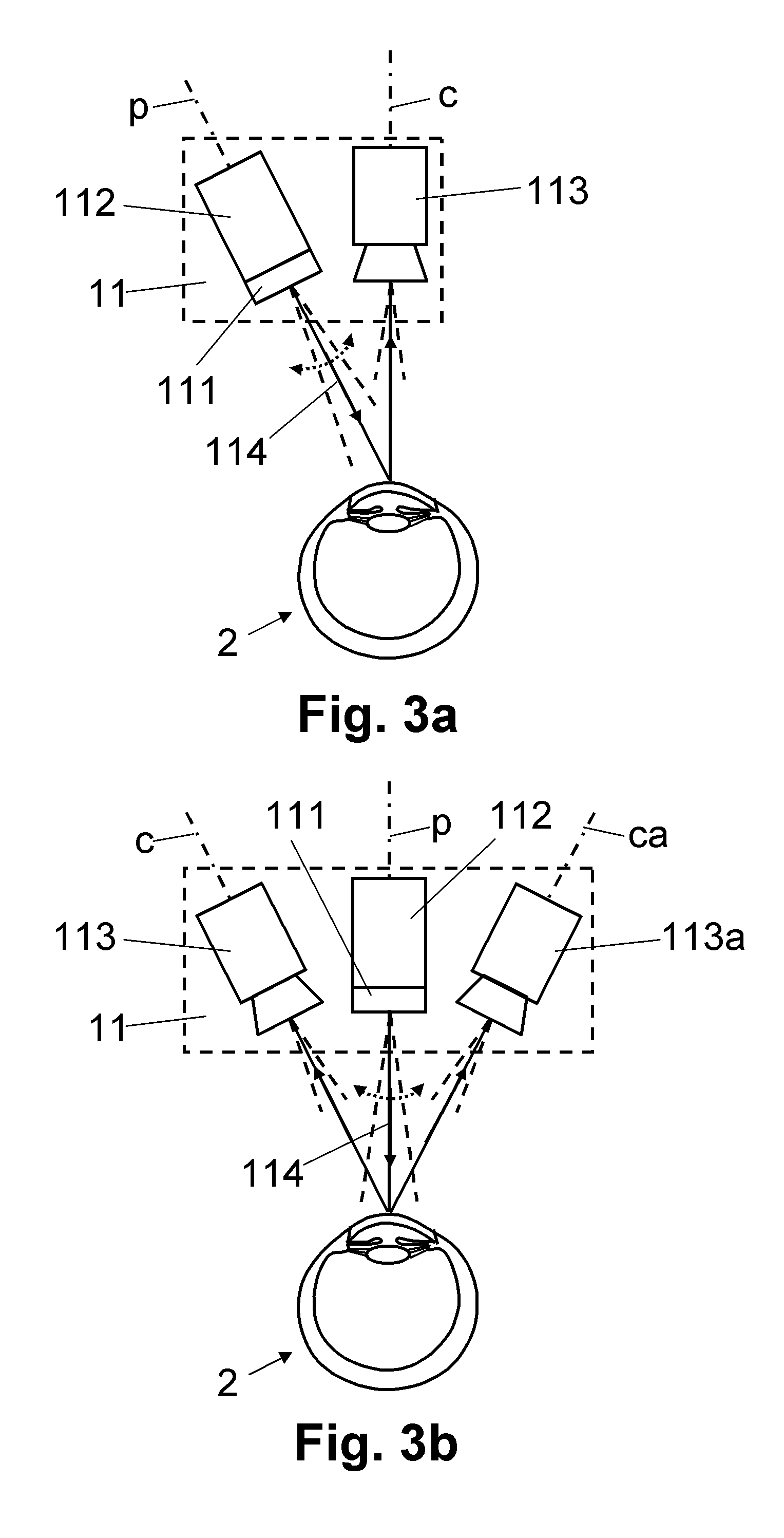Ophthalmological measuring device and measurement method
a measuring device and ophthalmological technology, applied in the field of ophthalmological measuring devices and ophthalmological measurement methods, can solve the problems of limited depth measurement range, limited number of measurement points, and movement artifacts caused by eye movements generating measurement errors, so as to reduce the impairment of measurement accuracy
- Summary
- Abstract
- Description
- Claims
- Application Information
AI Technical Summary
Benefits of technology
Problems solved by technology
Method used
Image
Examples
Embodiment Construction
ng measurement system and an interferometric measurement system of the ophthalmological measuring device.
[0035]FIG. 7 shows a block diagram that schematically illustrates a further rotatable arrangement of a triangulating measurement system and an interferometric measurement system of the ophthalmological measuring device.
[0036]FIG. 8 shows a block diagram that schematically illustrates a scan plane of the interferometric measurement system, which plane is situated in the plane of the light slit of the triangulating measurement system.
[0037]FIG. 9 shows a block diagram that schematically illustrates a further arrangement of the interferometric measurement system, in which the scan plane of the interferometric measurement system is situated in the plane of the light slit of the triangulating measurement system.
[0038]FIG. 10 shows a cross-sectional diagram that schematically illustrates a detailed measurement region of the interferometric measurement system, which region can move in t...
PUM
 Login to View More
Login to View More Abstract
Description
Claims
Application Information
 Login to View More
Login to View More - R&D
- Intellectual Property
- Life Sciences
- Materials
- Tech Scout
- Unparalleled Data Quality
- Higher Quality Content
- 60% Fewer Hallucinations
Browse by: Latest US Patents, China's latest patents, Technical Efficacy Thesaurus, Application Domain, Technology Topic, Popular Technical Reports.
© 2025 PatSnap. All rights reserved.Legal|Privacy policy|Modern Slavery Act Transparency Statement|Sitemap|About US| Contact US: help@patsnap.com



